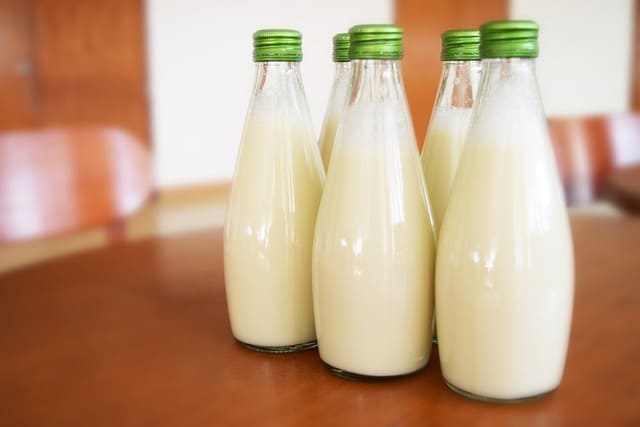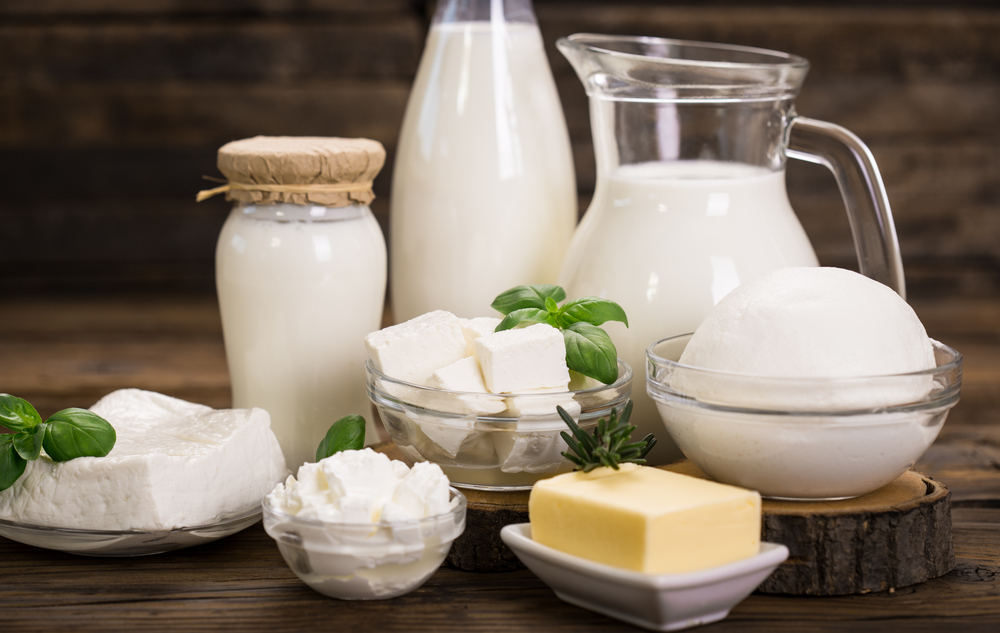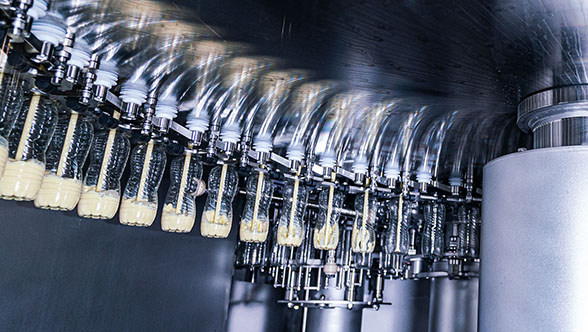To increase the shelf life, to simplify the transportation of a large volume of product over long distances, as well as to preserve the organoleptic initial indicators of products – aroma and taste, aseptic packaging is used in modern production.
Although it appeared relatively recently, but has already managed to become quite popular in the market of food products. It has also enabled many enterprises to supply competitive and high-quality products such as concentrated and freshly squeezed juices, fruit and vegetable purees to the international and domestic market.
This type of filling is suitable for many types of puree and liquid products.
Aseptic packaging process
The most common scheme for aseptic food packaging includes three stages:
- sterilization of the packaging material;
- heat treatment of the food product;
- packaging and sealing.
A general picture of the aseptic packaging process is given by the example of milk. Pre-prepared milk, after homogenization, is quickly heated under increased pressure in tubular heat exchangers to a temperature of 140 degrees C, at which the bacteria in the product are destroyed in a matter of seconds. By the way, to everyone’s delight, it has been found that the rate of destruction of vitamins and proteins in this process is much lower than the rate of destruction of microbes. After heating, the product is instantly cooled to about 25 degrees C, with no contamination. The product is then packaged in pre-prepared containers, and the low temperature of the product allows for guaranteed sealing of the packaging seam. Note that the demand for milk subjected to ultrahigh temperature processing is increasing annually. Thus, if in 1974 aseptically packaged milk accounted for 10% of the European market, today it is more than 50%.
Foil aseptic carton-based packaging consists of six layers. This material has a number of advantages over other types of packaging, both from the perspective of the buyer and the manufacturer.
- Firstly, no other packaging is as environmentally friendly.
- Secondly, from a technological point of view, cardboard is now an indispensable material for asepsis.
- Thirdly, the weight of the packaging is only 3% of the total weight.
- Fourthly, cardboard does not break, which means that losses during transportation are small.
- Fifthly, the packaging is convenient both for the distributor – because in a machine with a packaged product 95% of the volume is milk or juice and only 5% is packaging, while in glass bottles only 60% of the volume is for the product – and for the user – it saves space for storage.
- Sixth, the packaging has become colorful and attractive, with more useful information on the carton, which has become a powerful marketing tool for the manufacturer.
The packaging is treated with hydrogen peroxide vapor before bottling the liquid product, which then decomposes into harmless constituent parts – water and oxygen. The complete destruction of the microorganisms in the packaging is guaranteed by the action of atomic oxygen. The removal of hydrogen peroxide residues is ensured by blowing hot sterile air into the package under pressure for a short period of time. And thanks to the foil layer, the qualities of the packaging are preserved during these operations. In addition, there are pores in the cardboard, even covered with a layer of polyethylene without foil. It is important not to allow the product to come into contact with the cardboard, the layer of which is left without disinfection during the packaging preparation process. To this end, a polyethylene tape is placed along the seam of the packaging.
When using foil, it is also important that the aluminum layer protects the vitamins in the juice from being destroyed by light.

Safety of cardboard packaging
In order to be used for the production of food containers, the materials must be impervious to liquids, steam, odors, fats and gases. There are two ways to give the paper all of these qualities. For example, even at the production stage it can add fibrous materials, synthetic resins or gluing can be used. Or a second approach is possible, where finished paper or cardboard is combined with layers of polymers and metal to form combined materials for safe milk packaging.
Due to the presence in the composition of this material layer of paper or cardboard provides all the necessary consumer and physical-mechanical characteristics. Whereas a layer of aluminum foil reduces to a minimum the level of exposure to air, ultraviolet light and ecotoxicants. This type of packaging is valued by buyers much higher than glass and film.
Consumers appreciate the convenience, practicality, ease of transportation, and the ability to store the product longer. The latter quality is achieved through the processes of pasteurization and sterilization of milk.
If we talk about safe milk packaging, the advantages and disadvantages of different containers, the main advantage of cardboard packaging is considered to be the composition of the box. It is a laminate, which uses cardboard, aluminum foil and several layers of polymer. It is worth mentioning that foil is used to create containers for products that can be stored without refrigeration for a long period of time.
Polyethylene protects against bacteria, light, air, because they can negatively affect the characteristics of the dairy product. The laminate surface is treated with hydrogen peroxide before being shaped in the bags. Equally important, the bags are sealed below the level of the incoming liquid, due to which no air remains in the container, which means it cannot react with the dairy product.
One of the few proven suppliers of aseptic filling lines is Clever Machines.

What is important to consider when choosing an aseptic filling machine
Filling equipment is an expensive investment. It will pay for itself if you choose the right filling machine. Here are a few recommendations.
- Choose a machine based on the properties of the liquid to be filled and the type of container.
- Focus on output and sales volume.
- Design the line with extra capacity.
- Consider the dimensions of the plant and the size of the production room.
- Check the possibility of changeover and potential downtime.
- Study the range of optional functions.
- Evaluate the maintainability of the equipment.
The right choice will save unnecessary costs and guarantee payback in the shortest possible time.
Features of modern milk bottling lines
Automatic and semi-automatic bottling equipment offered by Euromash has a lot of advantages:
- maintaining sterility at all production stages;
- accurate dosing;
- reasonable maintenance cost, due to the widespread availability of spare parts for the milk bottling lines;
- easy removal of dirt from external parts, valves and sensors
- compatibility with various product viscosities;
- flexibility in adjustments.

When choosing a milk bottling line, pay attention to the price of components and consumables, performance, ease of adjustment and maintenance, scalability and upgradability. We recommend buying equipment of proven brands in the company Clever Machines, combining high resource and low operating costs. If you cannot buy a new line for milk bottling, we recommend to pay attention to the equipment that has been renovated.
The company offers a wide range of equipment of different capacities, suitable for enterprises with any output volumes. By contacting our specialists, you can get qualified assistance in selecting filling lines with suitable characteristics.
Introducing our revolutionary milk cleaners, advanced milk cleaning and filtration equipment. Our milk cleaners are equipped with a unique multi-stage filtration system that effectively removes all harmful bacteria and impurities from raw milk.
